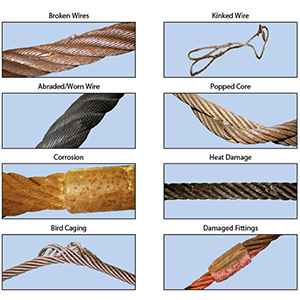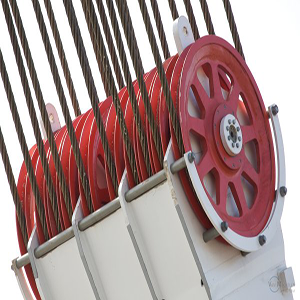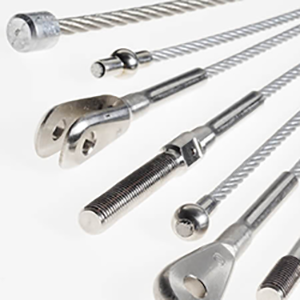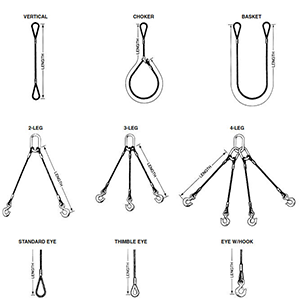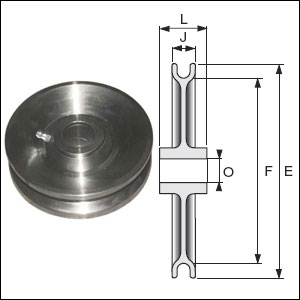Description
A wire broken under a tensile load that exceeds its strength by the “cup and cone” configuration at the fracture point (a). The necking down of the wire at this point shows that failure occurred while the wire retained its ductility. Shear-tensile fracture (b) occurs in wire subjected to a combination of transverse and axial loads. Fatigue breaks are usually characterized by squared-off ends perpendicular to the wire either straight across or Z-shaped (c & d).
Specifications
Criteria for Replacement of Wire Ropes
When to Replace Wire Rope – Based on Number of Broken Wires
| ANSI*
Standard
|
Equipment |
Number Broken Wires
in Running Ropes
|
Number Broken Wires
in Standing Ropes
|
| In One
Rope Lay
|
In One
Strand
|
In One
Rope Lay
|
At End
Connection
|
| B30.2 |
Overhead & Gantry Cranes |
12 |
4 |
Not Specified |
Not Specified |
| B30.4 |
Portal, Tower & Pillar Cranes |
6 |
3 |
3 |
2 |
| B30.5 |
Crawler, Locomotive
& Truck Cranes |
6 |
3 |
3 |
2 |
| B30.6 |
Derricks |
6 |
3 |
3 |
2 |
| B30.7 |
Base Mounted Drum Hoists |
6 |
3 |
3 |
2 |
| B30.8 |
Flotaing Cranes & Derricks |
6 |
3 |
3 |
2 |
| B30.16 |
Overhead Hoists |
12 |
4 |
Not Specified |
Not Specified |
| A10.4 |
Personnel Hoists |
6** |
3 |
2** |
2 |
| A10.5 |
Material Hoists |
6** |
Not Specified |
Not Specified |
Not Specified |
* American National Standards Institute
** Also remove for 1 valley break.

